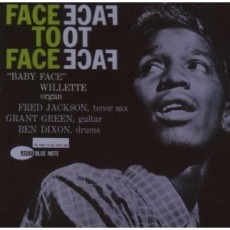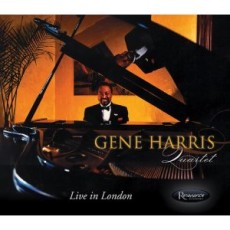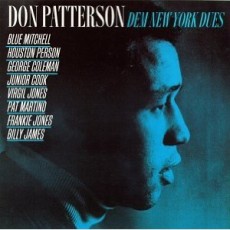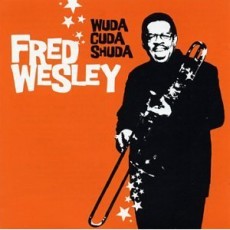
Daily Dose Of Jazz…
“Brother” Jack McDuff was born Eugene McDuffy on September 17, 1926 in Champaign, Illinois. He began his musical career playing bass first with Joe Farrell followed by Willis Jackson who encouraged him to take up the organ. In the late 50’s he moved to his new instrument and began attracting the attention of Prestige Records. He soon became a bandleader, leading groups that featured then, young guitarist George Benson, saxophonist Red Holloway and drummer Joe Dukes.
McDuff’s debut recording “Brother Jack” for Prestige was followed by his sophomore project, The Honeydripper, featuring Jimmy Forrest and Grant Green. After his Prestige tenure he joined the Atlantic Records family for a brief period and then by the 70s was recording for Blue Note.
The decreasing interest in jazz and blues during the late 70s and 1980s meant that many jazz musicians went through a lean time and it wasn’t until the late 1980s, with The Re-Entry, recorded for the Muse label in 1988, and once again began a successful period of recordings, initially for Muse, then on the Concord Jazz label from 1991. George Benson appeared on his mentor’s 1992 Colour Me Blue album.
Despite health problems, Brother Jack continued working and recording throughout the 1980s and 1990s, touring Japan with Atsuko Hashimoto in 2000. “Captain” Jack McDuff, as he later became known, was one of the most prominent jazz organist and organ trio bandleader during the hard bop and soul jazz era of the Sixties. He passed away of heart failure on January 23, 2001 at the age of 74 in Minneapolis, Minnesota.
More Posts: organ

Daily Dose Of Jazz…
Roosevelt “Baby Face” Willette was born on September 11, 1933 in New Orleans, Louisiana. His mother was a missionary who played the piano in the church where his father was a minister. His musical roots are therefore in gospel and Baby Face taught himself the piano and started out playing the piano for various gospel groups, and spent his early career touring across the United States, Canada and Cuba.
It was in Chicago that Willette decided to switch from gospel and rhythm & blues to playing jazz. He played piano with the bands of King Kolax, Joe Houston, Johnny Otis and Big Jay McNeely before switching to organ. He was inspired by Jimmy Smith’s work, however, his playing style remained heavily influenced by gospel and soul jazz. Based in Milwaukee he performed with his vocalist wife Jo Gibson at such clubs as The Flame Club, The Pelican, The Moonglow and Max’s among others.
In 1960 he moved to New York City where he met Lou Donaldson and Grant Green, and played on a few Blue Note sessions with them. This led to Willette being signed to the label, which recorded his debut album Face To Face. After stints in New York City, and then California, failing health forced a return to Chicago, where his family resided. This would eventually become his final resting place as he passed away on April 1,1971.

Daily Dose Of Jazz…
Gene Harris was born on September 1, 1933 in Benton Harbor, Michigan where he was first drawn to music at the age of four. He was attracted to the music of local bandleader Charles Metcalf’s group and was inspired to try to pick out songs on the piano. He also enjoyed the music he heard in church and the boogie-woogie records of his parents.
Gene quickly developed as a pianist, having many opportunities to play music while serving in the Army from 1951 – 54. Following his discharge, he originally formed The Four Sounds, but by 1956 abandoned their original plan to include a tenor-saxophonist and renamed themselves The Three Sounds. Joining Harris in the original line up of the band was bassist Andy Simpkins and drummer Bill Dowdy.
For the next 15 years, the trio made many notable recordings for Blue Note and other labels as well as supporting such musicians as Lester Young, Lou Donaldson, Nat Adderley, Johnny Griffin, Anita O’Day, Stanley Turrentine and Sonny Stitt, among others. In 1973, The Three Sounds disbanded, leaving Harris to pursue a solo career until he semi-retired in 1977, playing sometimes only in Boise, Idaho.
In the early eighties Ray Brown convinced Gene to tour with his trio and then led his own groups once again, recording mostly on Concord. Gene Harris was one of the most accessible jazz pianists and his soulful sound was immediately likable as he returned to the spotlight. He was widely associated with the Philip Morris Super Band for many years. The Grammy winning artist, whose music was infused with blues and gospel, left a legacy of sixty albums as a leader, 34 as a sideman and nine compilations before his passing away on January 16, 2000 of kidney failure at the age of 66.
More Posts: piano

Daily Dose Of Jazz…
Don Patterson was born July 22, 1936 in Columbus, Ohio. He started studying piano as a child, heavily influenced by Erroll Garner but by 1956 switched to organ after hearing Jimmy Smith play. Making his debut on organ in 1959 he played with various groups into the early Sixties that saw him start performing regularly with Sonny Stitt, where he made a name for himself. This led to numerous recording sessions as a leader with Prestige and later Muse Records beginning in 1964 with sidemen guitarist Pat Martino and drummer Billy James.
During the Sixties, Don recorded as a sideman with Eddie “Lockjaw” Davis, and Eric Kloss but his most commercially successful album was his 1964 “Holiday Soul” reaching #85 on the Billboard 200 three years later. However, with his troubles with drug addiction hobbling his career in the 70s, while residing in Gary, Indiana he would occasionally record for Muse Records.
By the 1980s organist Don Patterson had moved to Philadelphia, Pennsylvania and made a small comeback, but his health continued to deteriorate over the course of the decade, forcing him to frequent dialysis until he passed away on February 10, 1988. He left a catalogue of twenty-one albums as a leader and thirteen as a sideman.
More Posts: organ

Daily Dose Of Jazz…
Fred Wesley was born July 4, 1943 in Columbus, Georgia and raised in Mobile, Alabama. The son of a high school teacher and big band leader as a child he took piano and later trumpet lessons. At around the age of twelve his father brought a trombone home, whereupon he switched.
During the 1960s and 1970s Wesley went to R&B as many jazz musicians did to earn a living and became a pivotal member of James Brown’s bands, playing on many hit recordings including “Say It Loud – I’m Black and I’m Proud”, “Mother Popcorn” and co-writing tunes such as “Hot Pants”. His slippery riffs and pungent, precise solos, complementing those of saxophonist Maceo Parker, gave Brown’s R&B, soul, and funk tunes their instrumental punch.
In the 1970s he also served as bandleader and musical director of Brown’s band The J.B.’s and did much of the composing and arranging for the group. His name was credited on ‘Fred Wesley & the J.B.’s’ recording of “Doing It To Death” which sold over one million copies, and was awarded a gold record 1973. Leaving Brown’s band in 1975, Wesley spent several years playing with George Clinton’s Parliament-Funkadelic projects, even recording a couple of albums as the leader of a spin-off group, The Horny Horns.
Wesley became a force in jazz in 1978 when he joined the Count Basie Orchestra. He released his first jazz album as a leader, “To Someone” in 1988, followed by “New Friends”, Comme Ci Comme Ca, and the live album “Swing and Be Funky” and “Amalgamation”.
In the early nineties Fred toured with former JB colleagues Pee Wee Ellis and Maceo Parker, as the JB Horns. When Ellis left, the band became The Maceo Parker Band with Wesley as the featured trombonist until 1996 when he formed his own band, The Fred Wesley Group, now known as Fred Wesley and the New JBs.
Wesley’s 35-year career includes playing with and arranging for a wide variety of other artist such as Ray Charles, Lionel Hampton, Randy Crawford, Vanessa Williams, The SOS Band, Cameo, Van Morrison, Socalled and rappers De La Soul, to name a few, while many other artists have sampled his work.
He has written an autobiography “Hit Me, Fred: Recollections of a Sideman”. Wesley served as an adjunct professor in the Jazz Studies department of the School of Music at the University of North Carolina at Greensboro from 2004 to 2006, and now works with students as a visiting artist at numerous other schools including Berklee College of Music and Columbia College of Chicago.
More Posts: trombone


